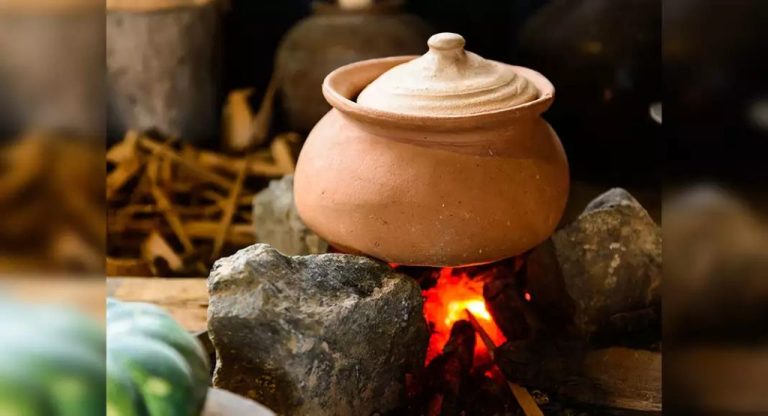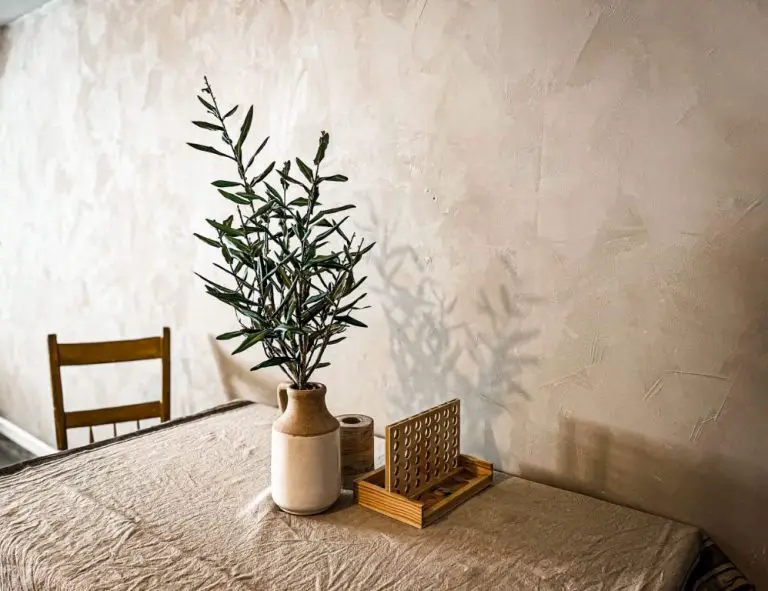What Makes Speckled Clay Speckled?
Speckled clay is a type of natural clay containing small flecks or spots of color distributed throughout the clay body. The speckles are formed from impurities in the clay that create visual variations in color and texture. Speckled clays are prized for their aesthetic appeal and are frequently used by potters, sculptors, and artists.
The speckles themselves come in an endless variety of sizes, shapes, densities, and color combinations. They arise during clay formation and can be the result of several natural factors that introduce colorant oxides into the clay. In this article, we will explore what makes speckled clay speckled by looking at clay composition, speckle formation, common types of speckled clay, speckle patterns, and how artists intentionally create speckled clay effects.
Understanding the geology behind these visually striking clays provides insight into the diversity of the natural world. Speckled clays also have a long history of artistic use and continue to inspire potters and clay artisans today.
Composition of Clay
Clay is a fine-grained natural material that is made up of microscopic and submicroscopic particles derived from the weathering of rocks over long periods of time. The composition of clay includes several different substances, the most common being the following:
- Silica – This is silicon dioxide, and is a major component of many common minerals like quartz, feldspar, and mica. Silica gives clay its hardness and structural strength.
- Alumina – Aluminum oxide that typically occurs combined with silica and water in clays. Alumina improves plasticity and dry strength of the clay.
- Water – Water is not part of the mineral structure of clay itself, but is contained in the spaces between the particles and helps bind the clay particles together.
- Iron oxides – These contribute to coloring in different types of clay from red and brown hues to yellow and black.
- Organic matter – Decomposed plant and animal residues also make up a small part of clay’s composition.
The proportions of these substances and other trace elements vary in different clay types. The most common clays include kaolinite, smectite, illite, and chlorite. The specific clay minerals present largely determine its properties such as plasticity, shrinkage, hardness, and absorbency.
Speckle Formation
Speckles in clay form due to the chemical and mineral composition of the clay. As clay sediments are deposited over time, small deposits of minerals like iron oxide and manganese oxide become incorporated into the clay. These mineral deposits are what create the speckled effect.
When the clay is fired at high temperatures, these mineral deposits undergo chemical changes that cause them to crystallize into small specks. The iron oxide commonly crystallizes into hematite, which has a reddish color. Manganese oxide forms into pyrolusite, which is dark gray or black. The crystallization process essentially concentrates the mineral deposits into small visible specks that stand out from the surrounding clay body.
The size and density of the speckles depends on factors like how much of the mineral oxides were originally present in the clay and the grade of heat applied during firing. Clays with higher natural concentrations of iron and manganese oxides will tend to produce more abundant and larger speckles. Higher firing temperatures will also cause more concentrated speckle formation.
Common Speckled Clays
There are many types of commonly found speckled clays, differentiated by their base color and speckle pattern.
Speckled Buff Clay
Speckled buff clay is characterized by its light tan or buff base color with dark brown, black, or red speckles. The buff color comes from a mixture of kaolin and iron oxide. This is one of the most abundant speckled clays found naturally.
Blue Speckled Clay
Blue speckled clay has a light blue-gray base color with small dark blue speckles distributed throughout. The blue tone is created by the presence of cobalt or copper oxides in the clay. Blue speckled clay can range from pale sky blue to deep ocean blue depending on the mineral content.
Pink Speckled Clay
Pink speckled clay gets its soft pinkish hue from iron oxide content. The speckles are often reddish-brown to black. The pinkish base results in a warm, earthy appearance. This type of speckled clay is less common than buff or blue varieties.
Black Speckled Clay
Black speckled clay has a very dark gray or black base color with speckles in white, yellow, or orange. The extremely dark base results from a high concentration of iron oxide. It has a dramatic appearance compared to lighter speckled clays.
Multicolored Speckled Clay
Some speckled clays exhibit a range of base colors like gray, brown, red, or green. The speckles themselves can also be multicolored depending on the mineral content. These clays derive their hue from a diverse mixture of metal oxides.
Uses of Speckled Clay
Speckled clay is commonly used for pottery, sculpture, and tilemaking. The speckles provide visual interest and texture to finished pieces. Speckled clays are especially popular for handbuilding techniques like pinching, coiling, and slab construction. The speckles add an organic, natural look to handmade items.
Speckled clays like stoneware and earthenware fire to a strong, durable finished product. The speckles remain visible even after firing, glazing, and polishing. The finished surface can showcase the clay’s natural colors and textures.
Using speckled clay allows artists to achieve one-of-a-kind surfaces and patterns in their work. No two speckled clays are exactly alike. The random speckles make each piece unique. Speckled clay can be used on its own or blended with other clays for custom effects.
Some downsides to speckled clay are that the speckles can make carved or stamped details harder to see. The speckles may also make it more difficult to achieve perfectly smooth surfaces. The speckles can interfere with glaze application as well. So speckled clays may not be the best choice for delicate, intricate designs.
Overall, speckled clay is a versatile, attractive medium for potters, sculptors, and other artisans seeking to produce natural, earthy pieces with rustic appeal.
Geographic Locations
Speckled clay is found in many regions around the world, typically in areas with certain geological conditions. Some of the most notable locations include:
The southeastern United States, especially in the states of Georgia, Alabama, and Mississippi. This region contains kaolin clay deposits with iron oxide speckles. The warm, humid climate promotes chemical weathering processes that create the distinctive mottled patterns.
Central France, where speckled clays from the Berry region are used to make high-quality ceramic wares. The local geology produces kaolinite clay with hematite inclusions that fire to a reddish-brown speckled effect.
The Amazon River Basin in South America contains alluvial speckled clays near major rivers like the Rio Negro. Annual flooding deposits silts and organic matter that create dark speckles in the predominantly white kaolin clays.
In China, speckled clays are common near major river systems like the Yangtze and Yellow Rivers. Weathered igneous and metamorphic rocks contribute colored mineral fragments to the clays.
Coastal regions of the United Kingdom, especially Devon and Dorset, have ball clays with iron oxide specs from the surrounding rock strata. These have been used historically for pottery.
Speckled clays require specific geologic conditions like active weathering, clay-rich soil parent material, and presence of colorful mineral deposits. Finding them is a clue to the environment and geology of a region.
Speckle Patterns
The speckles in speckled clay exhibit a wide range of shapes, sizes, and distribution patterns. Some of the most common trends include:
Speckle Shapes: Speckles can appear round, oblong, square, or irregular. Round speckles are most common, as minerals tend to form spherical shapes as they crystallize. Oblong and irregular shapes occur when speckles are stretched or compressed during the clay formation process.
Speckle Sizes: Speckle sizes range dramatically, from tiny pinpricks to large blotches over 1 cm across. The size depends on the original mineral size and how much crystallization occurred. Smaller speckles tend to be more uniformly distributed.
Distribution Patterns: Speckles may be randomly distributed, or clustered in patches. Some clays exhibit orderly rows or striations of speckles due to alignment during compression. Uneven distribution can occur if mineral sources are heterogenous during clay deposition and formation.
By analyzing the speckle patterns, geologists can learn about the conditions and processes occurring when the clay originally formed. The patterns provide clues about the clay’s origins and history.
Speckle Density
Speckle density refers to how concentrated or sparse the speckles are distributed throughout the clay body. There are several factors that control the density and appearance of speckles:
- Composition – Clays with higher amounts of accessory minerals like iron oxides and organic matter tend to have more speckles.
- Particle Size – Finer clay particles allow for greater concentration of speckles versus coarser particles.
- Firing Temperature – Higher firing temperatures can reduce speckle density by causing the speckles to spread out and blend more.
Speckle density can be measured quantitatively by analyzing images of the clay sample. The number of speckles within a measured area on the surface can be counted and calculated as speckles per square inch or per square centimeter. Higher numbers indicate greater speckle density. This measurement allows for standardized comparison between clay samples.
Visually, higher speckle density will appear as abundant concentrated speckles across the clay surface. Lower density is characterized by sparse and widely distributed speckles. Most speckled clays fall somewhere in between these extremes, with moderate speckle density being most common.
Creating Speckled Clay
If you want to create your own speckled clay, there are a few techniques you can use to add speckles to plain clay:
– Sand Speckles – Add a small amount of fine grain sand to your clay and knead it in. The sand will create small speckles throughout the clay. Start with 1 teaspoon of sand per 1 pound of clay and add more if desired.
– Paint Speckles – Use acrylic paints to hand paint small dots onto the surface of plain clay. Let dry fully before using the clay. Paint pens also work well for adding speckles.
– Clay Inclusions – Roll contrasting colors of clay into small balls or tubes and press them into the surface of your base clay. Knead together lightly so the inclusions don’t completely blend.
– Mica Powder Speckles – Mix mica powder into liquid clay or clay softener and then knead it into the clay. Mica powder adds shimmery speckles to the clay surface.
– Clay Confetti – Use a clay extruder to create small confetti shapes from a contrasting color of clay. Mix the confetti pieces into your base clay for speckled texture.
– Found Object Speckles – Press small natural objects like seeds, spices, dried flowers or leaves into the surface of the clay to create speckled impressions.
Conclusions
In summary, speckled clay gets its distinctive appearance from mineral deposits and impurities present when it was formed. During clay’s creation, small flecks of minerals like iron oxide or manganese oxide became embedded in the clay deposit. When the clay is fired or dried, these mineral deposits remain as speckles or flecks of color throughout the clay body. The speckle size, density, and color depend on factors like the composition and geology of the clay deposit.
Speckled clays add visual interest and diversity to pottery and ceramic work. The speckles provide natural decoration and complexity without the need for additional glazes or pigments. Speckled clays can make simple, elegant pottery when highlighted properly. As we’ve seen, several types of decorative clays feature speckles, especially raku and jasperware. Speckled clays remain popular for their versatility, accessibility, and artisanal qualities.
In conclusion, the speckles that give speckled clays their name arise from mineral deposits present during the clay’s formation. When fired, these deposits create the distinctive speckled appearance potters seek. Through an understanding of clay composition and geology, potters can locate and utilize speckled clays to add natural beauty to their works.



